Nightlife reports: clubbing in Berlin
Nightlife Reports | Berlin holidays We go deep into Berlin’s unique nightlife scene, where left-wing politics, gender experimentation, nudity and huge-scale brutalist architecture are the backdrop to the pumping techno of the German capital
Somewhere, outside, it must be the morning. Inside the main room of ://about blank, a once illegal club located in Berlin’s Friedrichshain neighbourhood, reality takes on a different hue.
Lights are flickering on the ceiling while high tempo techno judders through the speakers. In front of the DJ booth a woman with a tinsel tail, reminding me somehow of a unicorn, is dancing on top of the bass bin, conducting the crowd with a glitter coated baton while a completely naked, muscle clad man mock-worships her. In front of the dancing duo, the room beats on, unfazed. I’m not sure how many people even noticed.
The spirit of Berlin’s nightlife community is captured in moments like these. Venues such as ://about blank (don’t worry, you don’t have to say the punctuation) – a collectively run club founded on left wing principles – epitomise the way the best of the city’s clubbing landscape combines politics, sexual openness and progressive social values, creating safe, participatory and, ultimately, magical nightlife spaces for clubbers to lose themselves in.
Much of this idealism stems from Berlin’s history as a divided then unified place – many of its clubs first occupied the real-estate no-man’s land surrounding the area of the old wall, finding new meaning and political purpose for these neglected spaces throughout the 1990s. As Nadine Moser, better known as Resom, one of ://about blank’s resident DJs, told me: “You can’t see today’s situation without looking into that past. A part of Berlin’s nightlife scene was always connected to politics.”
Music aside, this is, undoubtedly, what makes the city’s nightlife scene so enviable. As any dedicated clubber will tell you, exploring it is as much an adventure as it is a privilege; one night could never be enough to do it justice.
Resom on the decks at ://about blank. Photograph: Christian Fladung
Facebook Twitter Pinterest
We meet at Paloma, a DJ bar on the first floor of an old brutalist-style shopping block, the dystopian vibe compounded by the view of the U-bahn vaulting the street outside. The Keinemusik crew has been on the scene for some years now, running a DIY label and hosting an all-night residency at Watergate, one of the city’s long-running, slightly slicker clubs, but for Andreas the smaller venues are as integral to the city clubbing as its more prominent ones. “Some clubs adjust their programming to make more money,” he tells me. “But there are loads like this one where you feel there are people just making it because they love what they do.”
![]()
Reznik from Keinemusik Photograph: Christian Hell
Facebook Twitter Pinterest
![]() Farbfernseher, small late night party bar in Kreuzberg. Photograph: Felix Clay/The Guardian
Farbfernseher, small late night party bar in Kreuzberg. Photograph: Felix Clay/The Guardian
Facebook Twitter Pinterest
And though clubbing in Berlin rings out dreamy tales of 36-hour techno parties, Sunday afternoon packed lunches in Berghain (guilty) and sexual permissiveness (we’ll get to that later), the city takes its nightlife culture seriously, however big or small the venue.
“You can’t see today’s situation without looking at the past. Part of Berlin’s nightlife was always connected to politics”
Nadine Moser, ://about blank dj
Rewind to earlier on the same Friday night I ended up in ://about blank and I’m having a beer in a far more laid back club in Kottbusser Tor, with Andreas Richter, better known as DJ Reznik from the Keinemusik crew, who’s showing me around some of his favourite underground spots in the city.
We meet at Paloma, a DJ bar on the first floor of an old brutalist-style shopping block, the dystopian vibe compounded by the view of the U-bahn vaulting the street outside. The Keinemusik crew has been on the scene for some years now, running a DIY label and hosting an all-night residency at Watergate, one of the city’s long-running, slightly slicker clubs, but for Andreas the smaller venues are as integral to the city clubbing as its more prominent ones. “Some clubs adjust their programming to make more money,” he tells me. “But there are loads like this one where you feel there are people just making it because they love what they do.”

Reznik from Keinemusik Photograph: Christian Hell
Facebook Twitter Pinterest
This is also the case at another nearby club we drop into, popular warm-up/mid-week party joint, Farbfernseher. The former colour TV store – with unusually friendly staff (we have to tell a joke before we’re let in) and upbeat crowd – is a small, cube-like, stripped-down space with a dancefloor surrounded by raised benches that create a mini-disco arena. “People just come and they dance,” says Andreas, which is pretty much my experience of the place. The music policy leans toward house and disco and it’s popular with the underground scene. The following night I swing by again (I really can’t recommend this place highly enough) to catch Hotflush’s Jack Haightonspinning classic house to a packed room. I also spot “Berlin’s oldest hipster” Günther Anton Krabbenhöft there, trotting around in his dandy attire. It reminds me of when I ran into an equivalent Lisbon nightlife character, 65-year-old director João Botelho in Lux; it adds a lot to a scene when you can count on seeing familiar faces. In Berlin you encounter a lot of regulars.
 Farbfernseher, small late night party bar in Kreuzberg. Photograph: Felix Clay/The Guardian
Farbfernseher, small late night party bar in Kreuzberg. Photograph: Felix Clay/The GuardianFacebook Twitter Pinterest
In terms of electronic music, one club that’s made a strong impression since opening around two years or so ago is OHM, which you’ll find just past the queue of tourists waiting to get into Dimitri Hegemann’s techno institution Tresor. “What I like is the diversity of the programming,” says Andreas, as we head inside through a small doorway in the side of the vast Kraftwerk Factory. “One night you can watch a noise band play, another a more experimental house/techno night like this one.”
The club, which is a cold, industrial square room with tiled walls and metal heaters, glowing red and hanging ominously from the ceiling above, attracts an art school chic, avant garde crowd to match the range in sounds that run through its incredibly warm, yet punchy sound system. Nights range from a sweat-drenched showcases from Lisbon’s ghetto electronic crew and label-of-the-moment Principe, to a dismorphic sound sessions from Berlin collective
The club, which is a cold, industrial square room with tiled walls and metal heaters, glowing red and hanging ominously from the ceiling above, attracts an art school chic, avant garde crowd to match the range in sounds that run through its incredibly warm, yet punchy sound system. Nights range from a sweat-drenched showcases from Lisbon’s ghetto electronic crew and label-of-the-moment Principe, to a dismorphic sound sessions from Berlin collective
At around 4am we head to ://about blank. The club occupies a derelict looking building with a big garden featuring a caravan to, you know, chill in, among other trippy hideaways scattered around its grounds. It’s a similar set up to other indoor/outdoor clubs like Sisyphos and Salon Zur Wilde Renate. Tonight ://about blank is taken over by Homopatik, a long-running monthly queer party with a passionate following run by DJ Mr Ties.As he says in an interview with Crack magazine: “Homopatik is over ‘gender’”, and the crowd follows suit – marching hard into the next day in a blur of brightly coloured, semi-clothed, beat-matched motion.
Clubbing is just one element to the venue, which challenges the status quo through its programming and internal organisation. Nadine says: “Simply the fact that it is operated by a collective is a political statement and a big motivation for other people to work in this way, instead of the typical hierarchic structures of capitalist economy. It also offers space for political initiatives which are presented there, like support events for refugees. Also, the club itself tries to have a 50/50 rate on female acts.”
Clubbing is just one element to the venue, which challenges the status quo through its programming and internal organisation. Nadine says: “Simply the fact that it is operated by a collective is a political statement and a big motivation for other people to work in this way, instead of the typical hierarchic structures of capitalist economy. It also offers space for political initiatives which are presented there, like support events for refugees. Also, the club itself tries to have a 50/50 rate on female acts.”
This kind of approach, lacing spaces with political thinking and ideas, turns partying in Berlin into a particularly mind-stretching and reaffirming experience, it’s just a shame that the demographic inside the clubs is not as culturally diverse as the neighbourhoods most are found in.
Still, it’s an attitude that pumps through the veins of many highly regarded nights in the city, such as high concept techno free-for-all Gegen, which draws a huge crowd to legendary Berlin sex club KitKat (a labyrinthine venue which features an indoor swimming pool and fire-breathing dragon), for a night of drugs, dancing and experimentation. While most nights at KitKat require a fetishy dress code, the point of Gegen is to be more open, though having seen the more mundanely dressed turned away at the door, I can attest that if you’re going to queue for two hours, you may as well make an effort – you don’t want to feel awkward handing your jacket over to a topless cloakroom attendant.
Article continues here
Still, it’s an attitude that pumps through the veins of many highly regarded nights in the city, such as high concept techno free-for-all Gegen, which draws a huge crowd to legendary Berlin sex club KitKat (a labyrinthine venue which features an indoor swimming pool and fire-breathing dragon), for a night of drugs, dancing and experimentation. While most nights at KitKat require a fetishy dress code, the point of Gegen is to be more open, though having seen the more mundanely dressed turned away at the door, I can attest that if you’re going to queue for two hours, you may as well make an effort – you don’t want to feel awkward handing your jacket over to a topless cloakroom attendant.
Article continues here
© the guardian | theguardian.com




